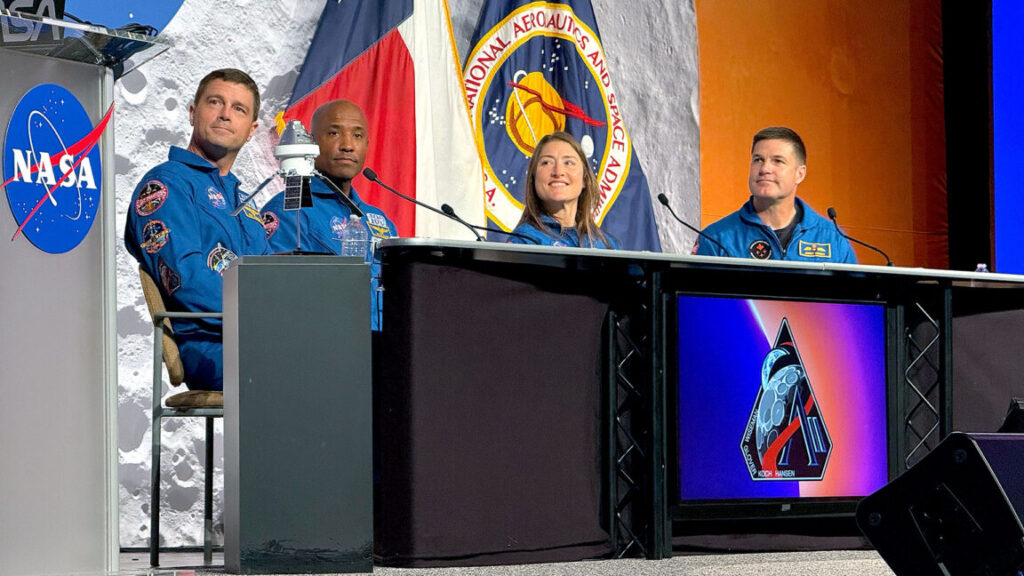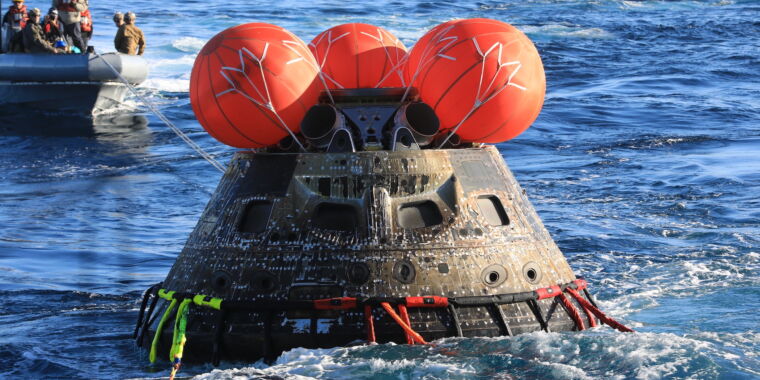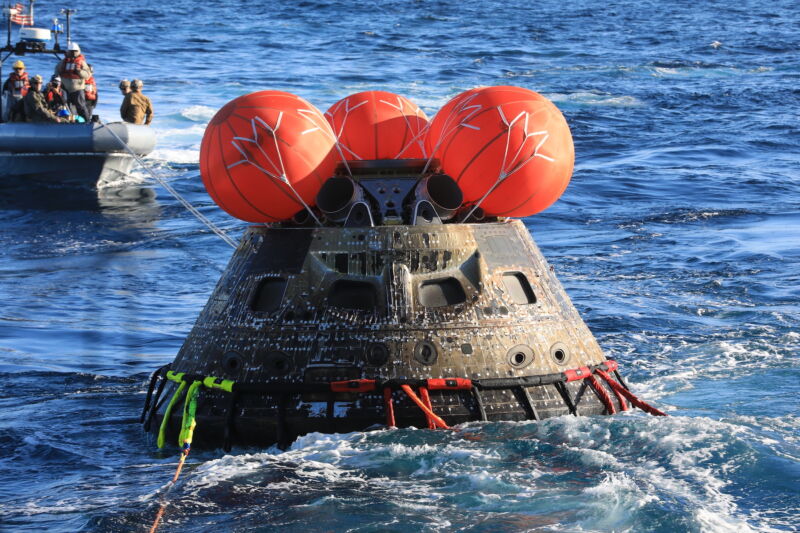The crew of Artemis II will fly on Integrity during mission to the Moon

The Artemis II crew (from the right): Reid Wiseman, Victor Glover, Christina Koch, and Jeremy Hansen pose in front of their Orion spacecraft, which they have named Integrity. Credit: NASA/Rad Sinyak
Whole and undivided
Ultimately, Integrity was inspired by something one of their instructors said while on a team-building trip to Iceland.
“He coined this for us, and we held on to it,” said Hansen, who, unlike his NASA crewmates, is a Canadian Space Agency astronaut. “It was this idea that you’re not a person who has integrity, you’re a person who strives to be in integrity. Sometimes you’re out of integrity, and sometimes you’re in your integrity. That was profound for all of us.”
For Glover, it boiled down to the definition.
“The Latin root means ‘whole.’ It’s a very simple concept, and it’s about being whole. This crew comes together as pieces—the four of us and our backups—but the six of us make up a whole team. The vehicle, the pieces come together and make up a whole spacecraft,” he said.
“What people anecdotally say is that integrity is what you do when no one’s watching. That, and truth, honor, and integrity matter,” said Glover. “There are so many layers to that name and what it means and what it inspires.”
Integrating Integrity
Integrity is one of the tenets of the Astronaut Code of Professional Responsibility. It is also one of the Canadian Space Agency’s core values.
“We all strive to be in integrity all of the time, but integrity isn’t an absolute that you either have or don’t have,” said Koch. “So this helps us give grace and build trust with each other.”
“I hope that people hearing [the name] over the 10 days of the mission appreciate all of the different things that it means, from a whole ship, a whole crew, to a wholeness and wellness that I think humanity just needs. We need to hear more of that togetherness and wholeness,” said Glover.

NASA’s Artemis II crew (from the left) Victor Glover, Reid Wiseman, Christina Koch, and Jeremy Hansen at the Johnson Space Center in Houston on Wednesday, September 24, 2025. Credit: collectSPACE.com
Now that it has been announced, next up is for Integrity to be used as the crew’s possible call sign.
“We waited to make sure the whole enterprise was ready for us to announce it before we even used it,” said Glover. “I think we’ll start using it in sims: ‘Houston, Integrity. Integrity, Houston.’ That’s the plan.
“But if someone doesn’t like that, then we won’t, and we can say Orion,” he said.
The crew of Artemis II will fly on Integrity during mission to the Moon Read More »


